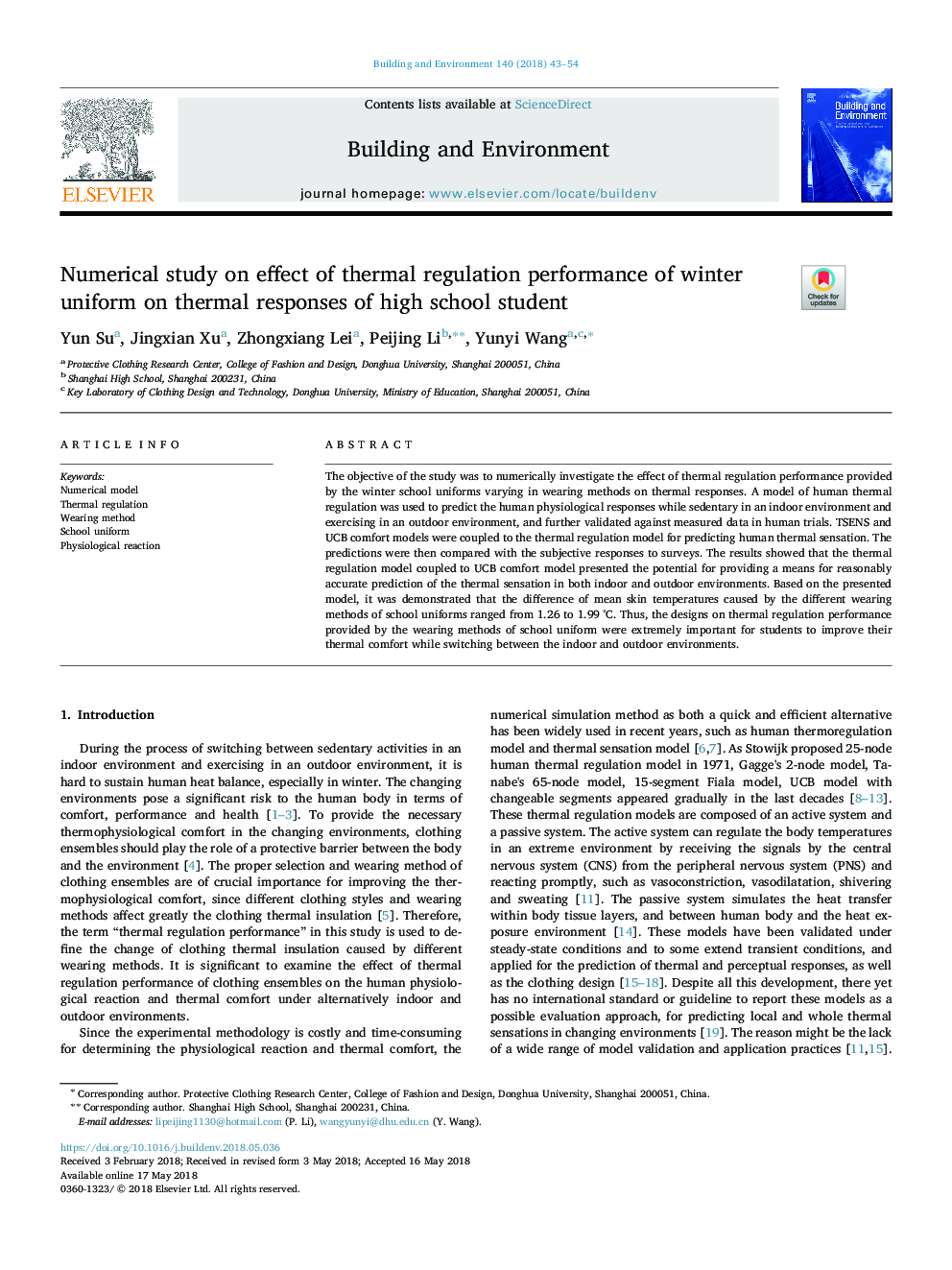| Article ID | Journal | Published Year | Pages | File Type |
|---|---|---|---|---|
| 6696956 | Building and Environment | 2018 | 12 Pages |
Abstract
The objective of the study was to numerically investigate the effect of thermal regulation performance provided by the winter school uniforms varying in wearing methods on thermal responses. A model of human thermal regulation was used to predict the human physiological responses while sedentary in an indoor environment and exercising in an outdoor environment, and further validated against measured data in human trials. TSENS and UCB comfort models were coupled to the thermal regulation model for predicting human thermal sensation. The predictions were then compared with the subjective responses to surveys. The results showed that the thermal regulation model coupled to UCB comfort model presented the potential for providing a means for reasonably accurate prediction of the thermal sensation in both indoor and outdoor environments. Based on the presented model, it was demonstrated that the difference of mean skin temperatures caused by the different wearing methods of school uniforms ranged from 1.26 to 1.99â¯Â°C. Thus, the designs on thermal regulation performance provided by the wearing methods of school uniform were extremely important for students to improve their thermal comfort while switching between the indoor and outdoor environments.
Related Topics
Physical Sciences and Engineering
Energy
Renewable Energy, Sustainability and the Environment
Authors
Yun Su, Jingxian Xu, Zhongxiang Lei, Peijing Li, Yunyi Wang,
